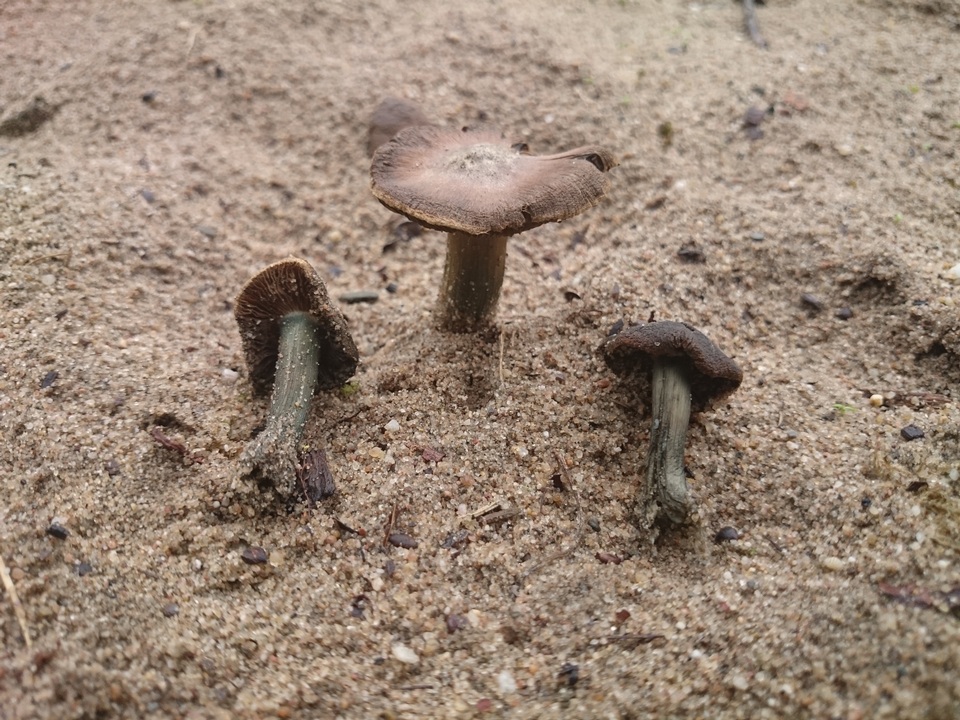Inocybe aeruginascens[i][ii] is a psychoactive mushroom native to Europe. But you should not expect to ever try it. There are several problems with this mushroom. First, it is difficult or impossible to cultivate, being mycorrhizal, so your mushrooms would have to have been harvested from the wild, and this species has deadly look-alikes. Second, not much is known about this species’ biochemistry, and it’s possible it is not actually safe to eat. However, some people do use it, so it is worth knowing about.
Identification
I. aeruginascens is small to very small with a short stem. It is reddish-brown to gray in color and does bruise blue. The spore print is brown. The mushroom has a characteristic but unpleasant soapy scent.
Look-Alikes
I. aeruginascens fits into the little brown mushroom category, a vast group of vaguely similar, but mostly unrelated nondescript fungi. Some are culinary, some psychoactive, and some are dangerous. A few can kill. It’s not that little brown mushrooms are impossible to tell apart, it’s that differentiating them requires attention to detail. Inexperienced foragers and over-confident old hands alike can get into trouble by harvesting something that just “looks about right.”
Inocybes add an extra wrinkle to the little brown mushroom problem in that many of them are difficult to tell apart, and the group could well have undescribed species in them[iii]. At least some Inocybes are dangerous[iv], or even deadly[v].
Effects
We have not been able to track down detailed information on what a trip on I. aeruginascens is like. Again, its biochemistry isn’t well-known. It is reported to be at least similar to a Psilocybe trip, but perhaps not identical.
Potency and Dosage
Potency doesn’t appear to be documented, and since the safety of using this mushroom is a bit unclear, it’s difficult to say what dosing guidelines should be..
Growing
I. aeruginascens, like all Inocybes, is mycorrhizal, meaning it cannot grow except in mutually-beneficial partnership with a plant. Possibly it could be cultivated by inoculating an appropriate plant with a tissue culture, but it’s not clear whether anyone had actually done this yet. Certainly, the species cannot be grown by anything like the standard methods used for cubes.
Toxicity, Safety, & Side Effects
It’s hard to say what the risks are for a species that is not well-known. It’s likely that all the standard warnings about psilocybin mushrooms apply, but there may be additional risks as well. And then there is the danger of eating another mushroom instead of this one by mistake. Depending on what the other mushroom is, that could be deadly.
References:
[i] (n.d.). Inocybe aeruginascens. Wikipedia
[ii] Fastfred (2007). Cultivation of Inocybe aeruginascens? Shroomery
[iii] Kuo, M. (2007). The Genus Inocybe. MushroomExpert
[iv] (n.d.). Inocybe sindonia (FR.) P. Karst.—Beige Fibercap. First Nature
[v] (n.d.). Inocybe geophylla (Fr.) P. Krum.–White Fibercap. First Nature



